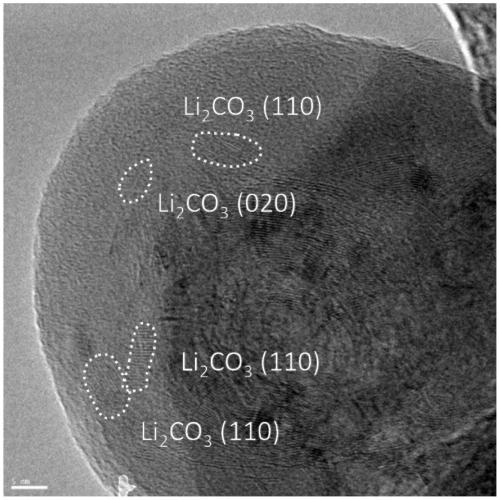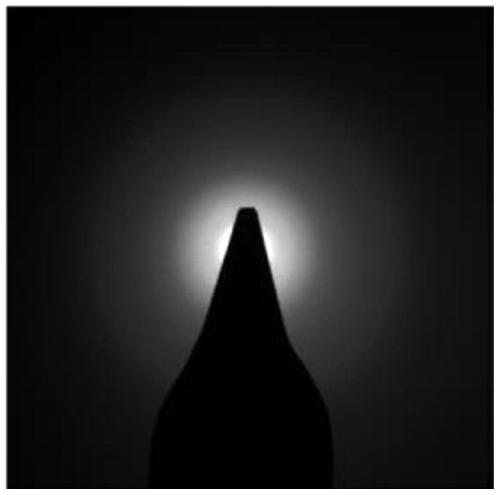Secondary battery negative electrode, secondary battery, and methods for manufacturing these
A secondary battery and manufacturing method technology, applied in electrode manufacturing, battery electrodes, electrode rolling/calendering, etc., can solve the problems of low charging and discharging efficiency, large volume change, easy deformation, etc., and achieve high productivity, high capacity, and energy density. Large, not easy to reduce effect
- Summary
- Abstract
- Description
- Claims
- Application Information
AI Technical Summary
Problems solved by technology
Method used
Image
Examples
other Embodiment approach
[0138] As other embodiments, it can be listed that: Figure 10 In the predoping apparatus 20 shown, it is a method of increasing the productivity by further expanding the length range of the predoping in the electrolytic solution 5 using a plurality of rollers.
[0139] Figure 11 It is a schematic diagram showing another example of the predoping apparatus 20A that performs the predoping step. This device 20A is a device in which two rollers are arranged horizontally, and the sheet-shaped object provided with the negative electrode active material layer 3 ′ on the current collector 14 travels therebetween, and when it is sandwiched and pressed by the two rollers, the A device for pre-doping with pressurized electrolysis by dripping electrolyte solution from above. For the composition of the device 20A, with Figure 10 The pre-doping device 20 described in 20 is the same, and therefore its details are omitted. It should be noted that this pre-doping device is not limited to...
Embodiment 1
[0150] (Production of secondary battery)
[0151] 7.0 g of Si powder, 1.5 g of acetylene black, and 15 g of a 10% aqueous solution of sodium polyacrylate having an average molecular weight of 450,000 were weighed, and purified water was added and kneaded while uniformly mixing to prepare a mixture. Purified water was further added to this mixture to adjust the viscosity to prepare a negative electrode slurry for coating the negative electrode active material layer. This slurry was coated on a Cu foil having a thickness of 20 μm with a coating thickness of 100 μm and a width of 130 mm using a knife roll coater, and dried at 80° C. Thereafter, by performing roll pressing, coating was performed with a thickness of 30 μm on Cu foil as a current collector. Through the step of forming the negative electrode active material layer, a negative electrode in which the gray negative electrode active material layer 3' containing Si as the active material was provided on the current collec...
Embodiment 2
[0166] (Fabrication of Coated Negative Electrode 2-1)
[0167] Weigh 7.0 g of Si powder, 1.5 g of acetylene black, and 15 g of a 10% solution of N-methylpyrrolidone of polyvinylidene fluoride with an average molecular weight of 50,000, and then add N-methylpyrrolidone to adjust the viscosity to prepare a coating. Negative ink. This ink was applied on a Cu foil having a thickness of 20 μm with a coating thickness of 100 μm and a width of 130 mm using a knife roll coater, and dried at 80° C. Thereafter, by performing roll pressing, a negative electrode active material layer with a thickness of 40 μm was formed on Cu foil as a current collector, and a coated negative electrode 2-1 with Si as an active material and polyvinylidene fluoride as a binder was obtained. .
[0168] (Fabrication of Coated Negative Electrode 2-2)
[0169] 7.0 g of Si powder, 1.5 g of acetylene black, and 5 g of a 50% aqueous solution of a polyacrylonitrile copolymer with an average molecular weight of 2...
PUM
| Property | Measurement | Unit |
|---|---|---|
| strength | aaaaa | aaaaa |
| diameter | aaaaa | aaaaa |
| thickness | aaaaa | aaaaa |
Abstract
Description
Claims
Application Information
 Login to View More
Login to View More - R&D
- Intellectual Property
- Life Sciences
- Materials
- Tech Scout
- Unparalleled Data Quality
- Higher Quality Content
- 60% Fewer Hallucinations
Browse by: Latest US Patents, China's latest patents, Technical Efficacy Thesaurus, Application Domain, Technology Topic, Popular Technical Reports.
© 2025 PatSnap. All rights reserved.Legal|Privacy policy|Modern Slavery Act Transparency Statement|Sitemap|About US| Contact US: help@patsnap.com



